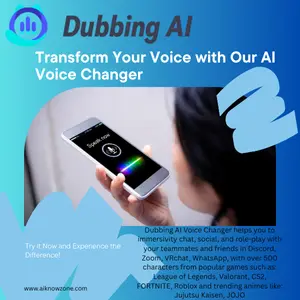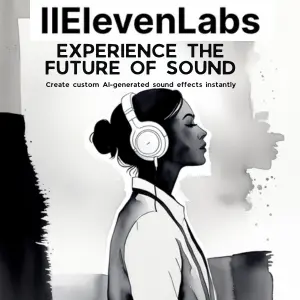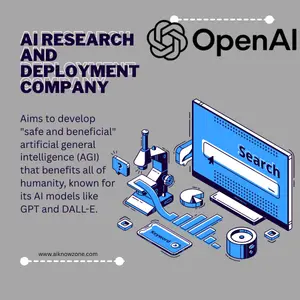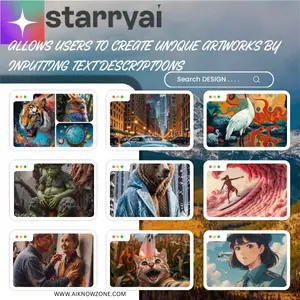Dubbing AI
Dubbing AI AI review: Fast, easy, and affordable AI-powered dubbing for videos. Ideal for content creators and businesses.
Description
Dubbing AI Review 🎙️
Ever watched a foreign film and wished you could understand it without those pesky subtitles? Or maybe you’re a content creator looking to reach a global audience without spending a fortune on traditional dubbing studios? Well, that’s where dubbingAI comes in! 🤩 These tools are designed to use artificial intelligence to translate and replace the original voices in a video with a new language, aiming to make content accessible to a wider audience. DubbingAI is rapidly evolving, and while it’s not quite perfect yet, it’s already showing immense potential in the entertainment industry, e-learning, and beyond. In essence, it’s all about breaking down language barriers and making video content more inclusive.
Key Features and Benefits
DubbingAI tools come with a range of features that try to simplify the dubbing process:
- Automated Translation: At the heart of dubbing AI is the ability to automatically translate dialogue from one language to another.
- Voice Cloning/Synthesis: Many dubbing AI tools can create synthetic voices that sound like the original speakers, or offer a range of pre-set voices.
- Lip Syncing: Some advanced tools attempt to synchronize the new audio with the speaker’s lip movements.
- Multi-Language Support: Most dubbingAI platforms support a variety of languages, allowing you to dub content into multiple target languages.
- Customization Options: Some tools offer customization options, such as adjusting the tone, pitch, and speaking rate of the synthesized voices.
- Integration with Video Editing Software: Dubbing can often be integrated into existing video editing workflows.
How It Works (Simplified)
Okay, so how does this digital magic actually happen? 🤔 First, the AI analyzes the original audio track of the video and transcribes the dialogue. Then, it translates that dialogue into the target language. Next, the AI uses voice cloning or synthesis to create new audio in the target language, spoken by a voice that either mimics the original speaker or is selected from a library. Finally, the AI attempts to sync the new audio with the video, adjusting the timing of the speech to match the lip movements as closely as possible. While it sounds complex, the goal is to make this process as automated as possible.
Real-World Use Cases for Dubbing AI
Here are some ways I’ve seen dubbing AI being used, or could be used in the near future:
- Globalizing E-learning Content: I recently used a dubbing tool to translate an online course into Spanish for a wider audience. This made the course accessible to a whole new demographic, saving the company a significant amount of money compared to traditional dubbing methods.
- Making Foreign Films Accessible: I’ve also used dubbing to watch a foreign film. The AI-generated dub wasn’t perfect, but it allowed me to understand the plot and enjoy the movie without having to constantly read subtitles.
- Localizing Marketing Videos: I once worked on a project where we needed to translate a marketing video into several languages for different regions. Dubbing AI provided a quick and cost-effective solution, allowing us to reach a global audience with localized content.
- Creating Accessible Content for the Hearing Impaired: I’ve seen some experiments using dubbing AI to generate accurate and expressive sign language interpretations of spoken dialogue, which can be incredibly beneficial for people with hearing impairments.
Pros of Dubbing AI
Here are some of the things I find most promising about dubbing AI:
- Cost-Effective: Dubbing AI can significantly reduce the cost of dubbing compared to traditional methods, which often involve hiring actors, renting studio time, and complex post-production processes.
- Scalability: It allows for the rapid dubbing of large amounts of video content into multiple languages.
- Speed: AI-powered dubbing can be much faster than traditional dubbing, enabling content creators to release localized content more quickly.
- Accessibility: It has the potential to make video content more accessible to a global audience, breaking down language barriers.
- Consistency: Dubbing AI can provide a more consistent dubbing quality.
Cons of Using Dubbing AI
Of course, dubbing AI is still a work in progress, and there are some limitations:
- Quality and Accuracy: The quality of the translation and voice synthesis can vary, and the emotional nuances of the original performance may not always be captured accurately.
- Lack of Naturalness: AI-generated voices can sometimes sound robotic or unnatural, which can be distracting for viewers.
- Lip Syncing Challenges: Perfect lip synchronization is still a major challenge, and poor lip sync can be jarring and detract from the viewing experience.
- Cultural Sensitivity: AI may struggle with cultural references, idioms, and humor, potentially leading to mistranslations or awkward dubbing.
- Ethical Concerns: There are ethical concerns about the use of AI to replicate voices, particularly in terms of ownership and consent.
- Technical Requirements: Effective dubbing AI often requires high-quality audio and video, as well as significant processing power.
Dubbing AI Pricing
Pricing for dubbing AI services varies depending on the provider and the specific features you need. Some platforms charge per minute of video, while others offer subscription-based plans. Many providers offer free trials or demos, so you can test the technology before committing to a paid plan.
Conclusion
Dubbing AI has the potential to revolutionize the way we localize and consume video content. While the technology is still evolving, it offers a compelling combination of speed, scalability, and cost-effectiveness. For content creators, businesses, and educational institutions looking to reach a global audience, dubbing AI is definitely a technology to watch. As the technology improves, I believe it will become an increasingly essential tool for breaking down language barriers and making video content universally accessible.






Reviews
There are no reviews yet.